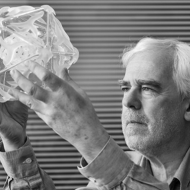
David Stuart
Appointment
Advisory Committee Chair
Molecular Architecture of Life
Connect
About
David Stuart’s work involves structural biology, virology, viral proteins, viruses, X-ray and crystallography. His research interests include the structure of viruses, viral proteins and cellular proteins that interact with viruses. Stuart has made many important contributions to the study of structural virology, including the determination of the structures of foot-and-mouth disease virus, bluetongue virus and the membrane-containing phages PRD1 and PM2. His work has set new records for atomic resolution of such large and complex structures. Stuart also collaborates on a number of projects investigating how viruses interact with receptors and how they evolve.
Awards
- Max Perutz Prize, European Crystallographic Association, 2007
- Aminoff Prize, Royal Swedish Academy of Sciences, 2006
- Fellow of the Academy of Medical Sciences, 2006
- Fellow of the Royal Society, 1996
Relevant Publications
Ginn, H.M. et al. “A revised partiality model and post-refinement algorithm for X-ray free-electron laser data.” Acta Crystallogr. Sect. D: Biol. Crystallogr. 71, no. 6 (June 2015): 1400–1410.
Gildea, R.J. et al. “New methods for indexing multi-lattice diffraction data.” Acta Crystallogr. Sect. D: Biol. Crystallogr. 70 (Pt. 10) (October 2014): 2652–2666.
Wang, X. et al. “Hepatitis A virus and the origins of picornaviruses.” Nature 517 (October 2014): 85–88.
El Omari, K. et al. “Unexpected structure for the N-terminal domain of hepatitis C virus envelope glycoprotein E1.” Nat. Commun. 16, no. 5 (September 2014): 4874.
De Colibus, L. et al. “More powerful virus inhibitors from structure-based analysis of HEV71 capsid-binding molecules.” Nat. Struct. Mol. Biol. 21, no. 3 (March 2014): 282–88.